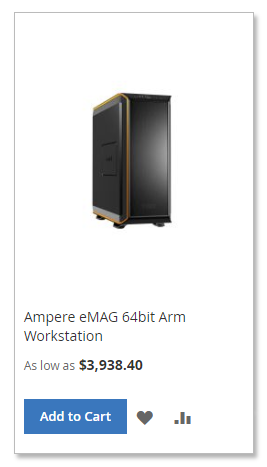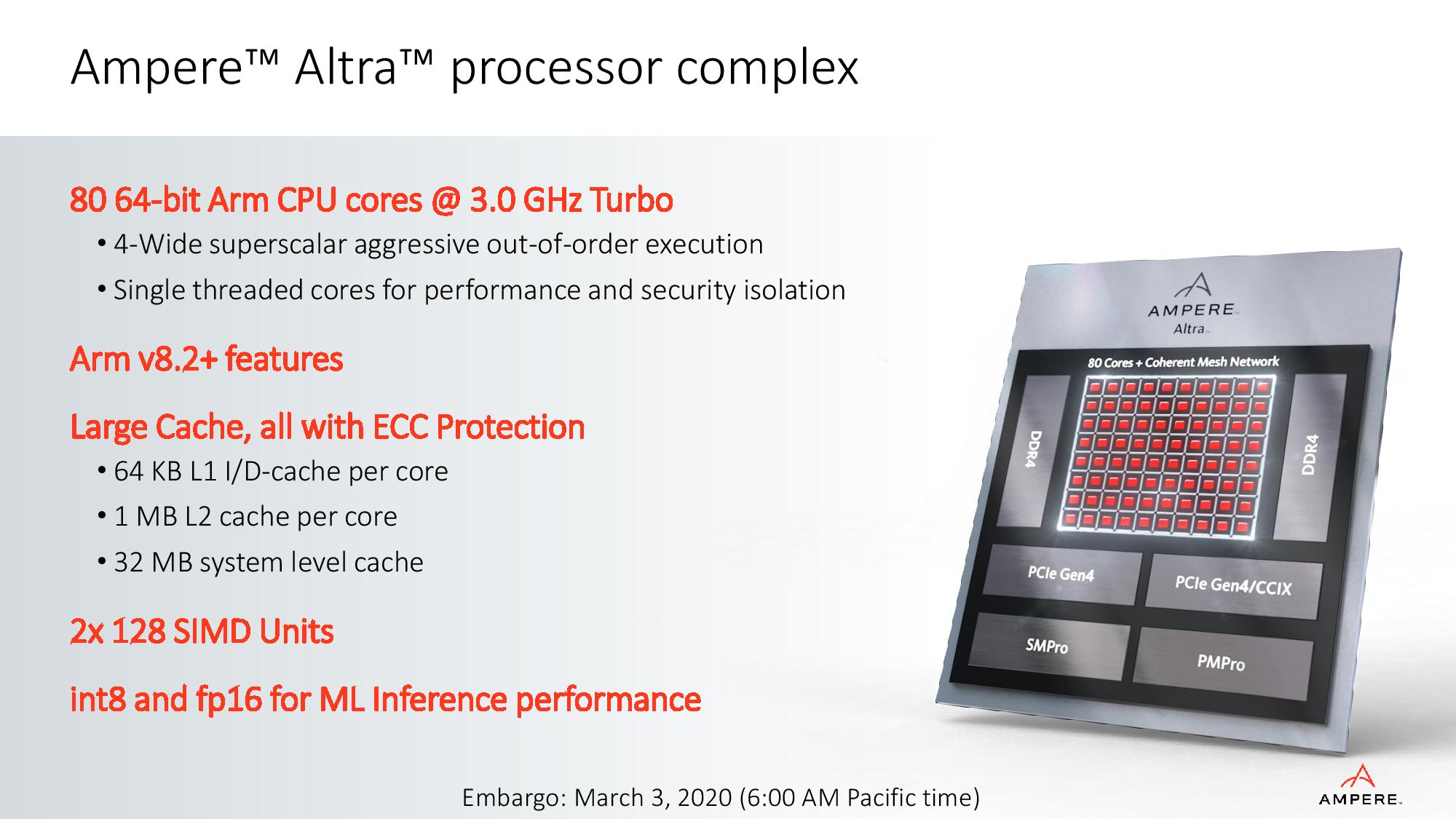Avantek's Arm Workstation: Ampere eMAG 8180 32-core Arm64 Review
by Andrei Frumusanu on May 22, 2020 8:00 AM ESTConclusion - All Eyes on an Altra System
Overall, my expectations of the eMAG Workstation at the beginning were in my view quite realistic, but I can’t help but still feel a bit underwhelmed by the actual experience of the system.
Yes, it’s incredibly important to have an SBSA system that boots generic OS images – and this probably remains the single biggest advantage of the eMAG to date. The problem is that even accounting for all those advantages, the aging CPU’s lacklustre performance just doesn’t add up to the extremely high cost of the system.


Ampere eMAG Workstation vs HoneyComb LX2K Pricing
If you’re a developer who needs to work on hardware enablement and make use of the SBSA system for software development, then you probably won’t need to be reading this piece to rationalise the eMAG Workstation, you probably already have one.
For the general populace, there’s better value Arm alternatives out there, even if SBSA is to be compromised.
Ampere Altra: 80 High-Performance Cores

What’s actually more important than the current generation eMAG Workstation is the possibility of Avantek and Ampere creating an updated successor based on the new Altra processor.
Amazon has already proven that Arm’s Neoverse-N1 CPU cores performs extremely well, and Ampere’s implementation with 80 cores and higher up to 3GHz clock speeds should pretty much outperform the cloud-provider’s chip.
From a software perspective, the eMAG Workstation is great. Iterating on that aspect, updating the hardware with the newest Ampere chip, and improving the cooling solution to something that’s quieter in an office environment, Avantek could see a ton of success with such a system, finally turbo-charging the Arm software ecosystems and finally giving developers the machines they’ve been demanding for years.
Avantek told us they’re willing to build such a system as long as there’s sufficient demand for it. I think the demand is there, we just need more awareness and for the hardware to deliver on its performance.
Related Reading:
- Arm Development For The Office: Unboxing an Ampere eMag Workstation
- Next Generation Arm Server: Ampere’s Altra 80-core N1 SoC for Hyperscalers against Rome and Xeon
- 80-Core N1 Next-Gen Ampere, ‘QuickSilver’: The Anti-Graviton2
- Arm Server CPUs: You Can Now Buy Ampere’s eMAG in a Workstation
- Ampere eMAG in the Cloud: 32 Arm Core Instance for $1/hr
- Arm Announces Neoverse N1 & E1 Platforms & CPUs: Enabling A Huge Jump In Infrastructure Performance










35 Comments
View All Comments
SarahKerrigan - Friday, May 22, 2020 - link
The X-Gene microarchitecture was never particularly stellar and by the time eMag rolled around it was woefully obsolete. I did some testing on eMag a few months back and it was pretty dire. When I spent some time on Graviton2 last week, it was like night and day compared to eMag (frequently 2+ times the single-thread perf despite a much lower clock), so I have high hopes for Altra.SarahKerrigan - Friday, May 22, 2020 - link
By the way, Andrei, you may want to correct the ST SPECFP subtest result graph - it looks like you used Graviton as a template and forgot to change the labels to eMag, because right now it only mentions Graviton1, and Graviton2, and Intel, not eMag.Andrei Frumusanu - Friday, May 22, 2020 - link
Thanks, good catch.Flunk - Friday, May 22, 2020 - link
Interesting to see even if this hardware only makes sense for very specialized purposes. ARM processors have gone from only applicable to mobile devices to something that would have made sense in a server a few years ago.SarahKerrigan - Friday, May 22, 2020 - link
This isn't exactly a good representative of ARM processors; chips like Graviton2 are competitive for server workloads today, and make eMag look like a toy by comparison.eastcoast_pete - Friday, May 22, 2020 - link
Thanks Andrei, good and in-depth review! You and others here have already commented on the great difference of this legacy CPU to Ampere's Altra or Amazon's Graviton 2. What I am also very curious about is Fujitsu's ARM-based multicore CPU (A64FX). Amongst other features, it supports 512-bit scalable vector extensions (SVEs), so same width as Intel's AVX512. I wonder if someone at Fujitsu reads Anandtech, and maybe send you a setup for review, although a PRIMEHPC might be out of the scope here. Still, that's an ARM v8 design that should beat the Graviton 2 and the Altra, especially if applications can make use of the wide SVEs.anonomouse - Friday, May 22, 2020 - link
Based on what we know of the A64FX, it’ll almost certainly *only* beat Graviton 2/Altra in cases where it can heavily utilize wide vectors. In all other scenarios it really doesn’t have a lot of execution width, and only runs at 2.2Ghz. The disclosures in their Microarchitecture guide also don’t showcase anything impressive looking on the branch predictor, which is fine for the typical HPC workloads it will run. That thing is very heavily purpose designed for HPC, and it’s clear they focused on that and not general performance.SarahKerrigan - Friday, May 22, 2020 - link
Indeed. It's a specialized chip. I would expect no miracles from it on general-purpose loads.eastcoast_pete - Friday, May 22, 2020 - link
Agree with you and anonomouse on general purpose loads; my interest in wide vectors is mainly due to their utility for video processing and encoding, if (!) the software supports it. For those applications, AVX512 is what keeps Intel competitive with EPYCs in the x64 space. As a question, is anything like an AV1 encoder even available for ARM v8, and specifically to use wide SVEs?Wilco1 - Saturday, May 23, 2020 - link
There are many AV1 codecs which have AArch64 optimizations, but most focus on older mobile phone cores (eg. http://www.jbkempf.com/blog/post/2019/dav1d-0.5.0-... ), so likely need further work on latest microarchitectures with up to 4 128-bit Neon pipes.It's early days for SVE, the first version (as in A64FX) is aimed at HPC. Video codecs will be optimized for SVE2 when hardware becomes available.